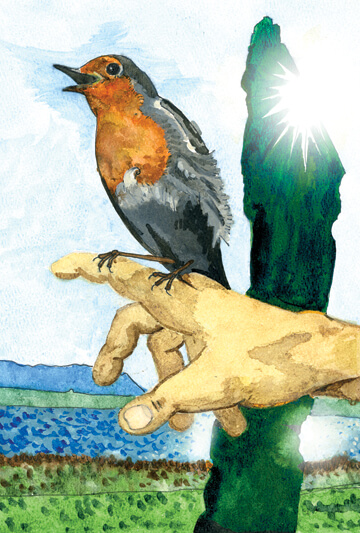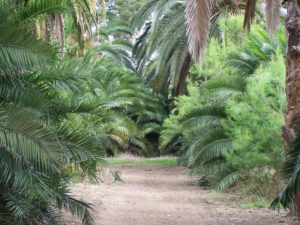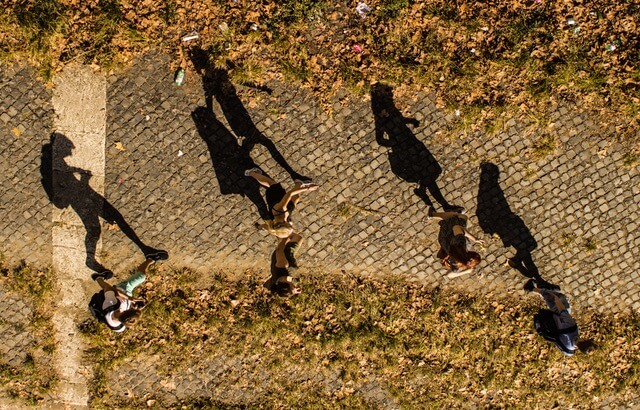Interview By Annabel Chiarelli
ANNABEL: David, can you elaborate on the energetic quality of love that is distinct from how we experience it as an emotional and psychological state?
DAVID: Love as an energy is an affirmation of being and identity. At least, this is how I experience it. It affirms and reaffirms existence, like a part of God recognizing and greeting another part of God. Love is God saying, “You are Mine. You are part of me.” Yet, there is no sense of being absorbed into something larger. Rather, love enhances the sense of freedom, the freedom to be what you are and to explore and unfold your unique potentials.
When I feel love for my wife Julia, there is a sense of warmth, of security, of attraction, of appreciation, of bonding. All of these I experience as emotions within myself. Yet when I feel love from a being in the spiritual realms—from an Angel, say—there is none of this emotional response. Instead, I feel affirmed in my beingness and also affirmed as part of the whole community of divine life that permeates the cosmos. There is a sense of celebrating who I am. Of course, in my love for Julia, there is also this same celebration of her unique identity and beingness. In loving her, I want to affirm her identity and her freedom to be herself and to unfold her unique potentials.
On all levels, love is an act of blending. In our human sphere, this is often experienced as a sense of togetherness, a melding of mind and heart. In the spiritual realms, the energy of love becomes, as I said, a celebration of the other and through that celebration, a participation in the other’s beingness. In this sense, love is a portal into an experience of unity and wholeness.
Love as an energy gives me a foundation on which to stand by affirming my beingness and existence. From this place of standing, I am free to give and receive love as an emotion, to desire, to connect, to appreciate, to honor, to cherish…all those feelings we associate with loving.
Having said this, I hasten to add that this is one person’s perception. Love as a universal, cosmic force undoubtedly has qualities and manifestations far beyond my ability to perceive or comprehend. And I also want to add that in the energetic fields that correspond to human thought and feeling, the same fields in which “The Scream” can exist, love does manifest its energy as one of attraction, desire, and connection. It’s just that as our consciousness interacts with higher levels of being, we discover it’s much more than just that.
ANNABEL: Is it in part a holding of that indestructible potential for redemption?
DAVID: Yes, I think we could say that. After all, redemption is the affirmation and re-claiming of one’s true, sacred identity. It’s an affirmation of who we really are, and that affirmation is certainly an expression of love.
Everything that comes into existence possesses its own unique spiritual identity which then unfolds its potentials along whatever developmental track or tracks become appropriate for it or chosen by it. Love is the energy that recognizes and affirms that identity and empowers its sacred expression, by which I mean the expression of what is true for it as established by the circumstances of its emergence from the Generative Mystery. But along this developmental track, a being or identity may lose sight of who and what it is and become entangled in patterns not true to its nature. It becomes in some way broken, or broken away from its true nature. In a way, this is what evil is, the expression of a broken identity, an identity that has forgotten its basic nature. The redemptive power of love lies in its ability to recall a being to itself, to enable it to remember who it is and thus to become disentangled and whole from what has been limiting or distorting it. No being is ever so lost, so broken, so entangled that love cannot ultimately reach it, enable it to remember, and thus redeem it, though it may take a very long time for this to happen.
ANNABEL: How do we go about cultivating this energy of love within ourselves in our subtle activism work, particularly in the case of dealing with negative energies, people, and situations?
DAVID: Subtle energy work benefits from a clear perception of a situation. I would even say that it requires it. Indulging in wishful thinking or fantasy only makes matters more difficult as it can distort or weaken the subtle energies we wish to work with. So, if I see something that’s negative and that causes me to react, I need to be clear both about what I’m seeing and about my own reaction. I want to name what is happening as accurately as I can.
Let’s take a concrete example. There was a report on the news about the children being hurt and killed by the artillery and air attacks upon Aleppo in Syria. They showed a small girl, maybe three or four years old, being dug out of the rubble of her home and rushed to what passes for a hospital in that benighted city. All the rest of her family had been killed. My reaction was sorrow and grief for this child and for all the children and civilians being injured. I wanted to reach out with subtle energies to bless the little girl and also to bless and hold in love and vitality those “white hat” responders who day after day and night after night go to these piles of rubble that used to be homes and try to dig out survivors.
At the same time, there’s a war crime being committed; innocent civilians are the targets of air and artillery strikes for the purposes of generating terror. The people ordering and carrying out these strikes are directly to blame for the suffering they are inflicting, and I’m angry as hell with them. And I felt anger and grief as well that humanity allows such things to happen, fully acknowledging that I am part of this humanity and therefore share in our collective responsibility as a species.
Now, if I’m going to do an act of subtle outreach, I need to accept all these emotions I’m feeling: the grief, the sorrow, the anger. They are part of my energetic reality. And I have to accept the negative energies swirling around Aleppo. At the same time, I know that I don’t want any subtle energies I project to make matters worse. I want to elevate the vibrations in the subtle environment, not coarsen them. This means I need to respond with love.
Here, I think, is where people get hung up. How can one respond with love unless one denies or suppresses the other emotions that are present, the grief, the anger, and so on? And just what can subtle activism do in this situation anyway? Might it not just be a fantasy I do in my head in order to feel I’m contributing in a positive way?
The last question is easily answered by anyone who knows that we simultaneously inhabit both a physical world and an energetic one. Subtle actions cannot replace physical ones, but the converse is also true: physical actions are enhanced in a supportive subtle environment. Now, if a person is a materialist who denies that anything other than the physical world exists, then none of this will make sense anyway. But for those of us who are aware of the energy environment, we know that its quality impacts its physical counterpart.
Now, it would be the height of arrogance and grandiosity for me to feel that I could change the whole subtle “atmosphere” around Aleppo. That is more than any one person can do. But I can contribute to changing the subtle environment around a person or a group of persons, and I can provide positive energies for other beings, Angelic beings, to use in their work as they do attempt to heal and transform the negativity in that place. So in seeking to bless the little girl and those who are trying to save children like her, I am not wasting my time.
However, I cannot bless her or them, or anyone else, if my own energy field is defined by anger, even though that anger is justified. So my first step is to acknowledge my anger and grief and any other negative emotions I may have, like a sense of helplessness in the face of such tragedy. Then I thank these feelings for heightening my awareness of the situation in Aleppo and connecting me to it emotionally and mentally. In a way, they have been messengers alerting me to trouble. But now they’ve done their job. Now a different set of thoughts and feelings must form the response, and these must be based in love. The reason energetically is very simple: love-based energies cannot be hijacked and co-opted by any negative elements active in the subtle environment around Aleppo. Angry energies could be; fearful or hateful energies could be. But love cannot. It’s like a heavily armored convoy that cannot be attacked and can deliver the goods.
So my next step is to focus on my ability to love, while honoring and appreciating my anger and understanding perfectly why I have it. I need to go to that inner place from which love emerges. Each of us has such a place; we just need to find and acknowledge it and then practice drawing from it. I find the Touch of Love exercise I present in my book very good for doing this.
Once I am in touch with my loving energy, then I fill my being with it. Note that I’m not suppressing my anger or grief in so doing. I’m not denying them or pushing them away, and I’m most certainly not telling myself that I shouldn’t have anger, that somehow it’s not “spiritual.” That’s nonsense. A horrendous act has taken place, and I have every right to be angry about it. But I’m like a surgeon. To do my work, I need to step into a calm, focused place. As I said, the anger has done its job. Now it’s love’s turn.
So I fill myself with love and then I imagine (yes, imagination is very important as a focusing lens) myself in the presence of this little girl. Am I really mystically or psychically with her? Maybe. What is important, though, is that where my mind is focused, there my energy flows whether I’m aware of it or not. So I’m focused on being with her as a presence of love, of calm, of healing, and of compassion.
I hold this for as long as feels comfortable and right. It could be for several minutes, it might be just for a few seconds. Duration is not really important. But when I feel complete or full in my body, then I stop.
But what about those who are committing the war crimes, attacking civilians or ordering it done? I’d like to do some inner work with them, too. And here as well, the energies I work with must be love-based, otherwise they will be rejected or worse, will stimulate an energetic reaction that may make the individuals even more violent, more aggressive, more hurtful. So I have to discern how loving I can be. At what level can I honestly engage with these politicians and soldiers with loving intent? I want to be clear about this in myself. My objective is not to attack them, damage them, take revenge upon them, make them suffer for what they’re doing (however tempting all that might be!). My objective is really two-fold. One is to offer protection and healing to the souls of these individuals, for the actions of their personalities in causing needless pain and suffering to others attacks the vitality and “texture” (I don’t know what else to call it) of the soul. The soul is sickened, and I have compassion for that. So that’s one thing. The other is that I want to place into their energy environment a Light that can awaken in them a resistance to what they’re doing so that they will stop. If I just beam Light at them, it will probably be rejected. But I can gently surround them with a loving Light that a person could absorb and in so doing, become horrified at what they’re doing and make a decision to stop.
So again, remembering that the cardinal rule in subtle activism is not to impose but to respect the sovereignty and integrity of all involved, I again fill myself with love and in my imagination, place myself in the environment of those ordering and committing these acts. Then I ask that the love and the Light I offer become part of their environment in a way that will stimulate awakening and change. And I call upon spiritual allies to help with this, particularly in ways that will ensure the subtle energies I offer will stick around awhile in that environment and have a chance to do their work.
This sounds wimpy and un-warrior-like, but I do not have the power to make these people change, no matter how puffed up I make my self-image or how much I want to "fight evil." However, I can contribute to altering both the energy environment in which these people are working and the probabilities of their success. Does this have any effect? Yes. I’ve seen this work in very difficult situations where on the surface things seemed hopeless, yet within a matter of hours and days amazing transformations took place.
And I’ve seen it not work, as well. Situations and people are complex, and many variables can be at work. But love is never wasted. Its effects can be delayed but never ultimately stopped or denied.
Click on the links to read Part 1, Part 2, Part 3 and Part 4 of this interview.



 When I used the term Gaianeering to describe the
When I used the term Gaianeering to describe the 
 A friend and I were talking recently about the many ways we perceive and interpret the world through our subtle senses. She shared a conversation in which someone made the statement, “My ‘first’ language is intuition.” That statement got me thinking about what I would consider as my “first language”. How do I first connect with and hear the world? How did it first speak in return? How might I widen my perception in order to better understand and communicate with others?
A friend and I were talking recently about the many ways we perceive and interpret the world through our subtle senses. She shared a conversation in which someone made the statement, “My ‘first’ language is intuition.” That statement got me thinking about what I would consider as my “first language”. How do I first connect with and hear the world? How did it first speak in return? How might I widen my perception in order to better understand and communicate with others? But multi-sensory information is not new to the subtle realms of our world. While we humans have privileged spoken language and only recently have come to recognize auditory, visual and kinesthetic senses as part of our communication platform, other realms communicate fluently through all these and a more formative language — the language of love and shared being. It is not specifically auditory, kinesthetic or visual, though it can use any and all of those forms. Love communicates through qualities such as respect, honor and joy and the energy of our intention in action. It is with these languages that we build our fluency for communicating in Gaia’s subtle ecology of life.
But multi-sensory information is not new to the subtle realms of our world. While we humans have privileged spoken language and only recently have come to recognize auditory, visual and kinesthetic senses as part of our communication platform, other realms communicate fluently through all these and a more formative language — the language of love and shared being. It is not specifically auditory, kinesthetic or visual, though it can use any and all of those forms. Love communicates through qualities such as respect, honor and joy and the energy of our intention in action. It is with these languages that we build our fluency for communicating in Gaia’s subtle ecology of life. Join Freya Secrest for
Join Freya Secrest for 








